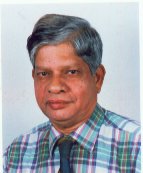Wednesday, March 23, 2011
New technique enables much faster production of inexpensive solar cells
New technique enables much faster production of inexpensive solar cells: "ScienceDaily (Mar. 17, 2011) — TU Delft has demonstrated that the speed at which inexpensive solar cells are produced can be increased by a factor of ten -- and that this can be achieved without any detriment to the energy yield of the cells. This will almost certainly result in a further reduction in the price of the cells, which are made of amorphous silicon. On March 14, Michael Wank defended his thesis on this subject at TU Delft."
Tuesday, February 22, 2011
India's Renewable Future: Challenges and Prospects | Renewable Energy News Article
India's Renewable Future: Challenges and Prospects | Renewable Energy News Article
Dr. Farooq Abdullah, India's Minister of New and Renewable Energy, wants his country to transform the promise of boundless and clean energy into reality.He said that "Although we have seen an impressive increase in installed capacity addition, from barely about 1,350 MW at the time of independence (1947) to about 160,000 MW today, over 90,000 MW of new generation capacity is required in the next seven years. A corresponding investment is required in transmission and distribution. The challenge facing a developing nation such as ours is to meet our increasing energy needs while minimizing the damage to the environment.This is why, while striving to bridge our energy deficit, we want to increase the share of clean, sustainable, new and renewable energy sources. Whether or not renewable energy completely replaces fossil fuel, we are determined to develop renewable energy to its fullest potential."
Dr. Farooq Abdullah, India's Minister of New and Renewable Energy, wants his country to transform the promise of boundless and clean energy into reality.He said that "Although we have seen an impressive increase in installed capacity addition, from barely about 1,350 MW at the time of independence (1947) to about 160,000 MW today, over 90,000 MW of new generation capacity is required in the next seven years. A corresponding investment is required in transmission and distribution. The challenge facing a developing nation such as ours is to meet our increasing energy needs while minimizing the damage to the environment.This is why, while striving to bridge our energy deficit, we want to increase the share of clean, sustainable, new and renewable energy sources. Whether or not renewable energy completely replaces fossil fuel, we are determined to develop renewable energy to its fullest potential."
Thursday, January 20, 2011
New solar cell self-repairs like natural plant systems
New solar cell self-repairs like natural plant systems: "Researchers are creating a new type of solar cell designed to self-repair like natural photosynthetic systems in plants by using carbon nanotubes and DNA, an approach aimed at increasing service life and reducing cost. 'We've created artificial photosystems using optical nanomaterials to harvest solar energy that is converted to electrical power,' said Jong Hyun Choi, an assistant professor of mechanical engineering at Purdue University, West Lafayette, Ind.
- Sent using Google Toolbar"
- Sent using Google Toolbar"
Sunday, November 14, 2010
New highly stable fuel-cell catalyst gets strength from its nano core
New highly stable fuel-cell catalyst gets strength from its nano core Now, scientists at the U.S. Department of Energy's (DOE) Brookhaven National Laboratory have developed a new electrocatalyst that uses a single layer of platinum and minimizes its wear and tear while maintaining high levels of reactivity during tests that mimic stop-and-go driving.The newly designed catalysts are composed of a single layer of platinum over a palladium (or palladium-gold alloy) nanoparticle core. Their structural characterization was performed at Brookhaven's Center for Functional Nanomaterials and the National Synchrotron Light Source.
Thursday, November 11, 2010
Sunday, October 17, 2010
Silicon strategy shows promise for batteries: Lithium-ion technique for electric cars, large-capacity storage
Silicon strategy shows promise for batteries: Lithium-ion technique for electric cars, large-capacity storage ScienceDaily (Oct. 13, 2010) — A team of Rice University and Lockheed Martin scientists has discovered a way to use simple silicon to radically increase the capacity of lithium-ion batteries.
Monday, October 11, 2010
Fuel cells in operation: A closer look
Fuel cells in operation: A closer look ScienceDaily (Oct. 7, 2010) — Measuring a fuel cell's overall performance is relatively easy, but measuring its components individually as they work together is a challenge. That's because one of the best experimental techniques for investigating the details of an electrochemical device while it's operating is x-ray photoelectron spectroscopy (XPS). Traditional XPS works only in a vacuum, while fuel cells need gases under pressure to function.
Subscribe to:
Posts (Atom)




